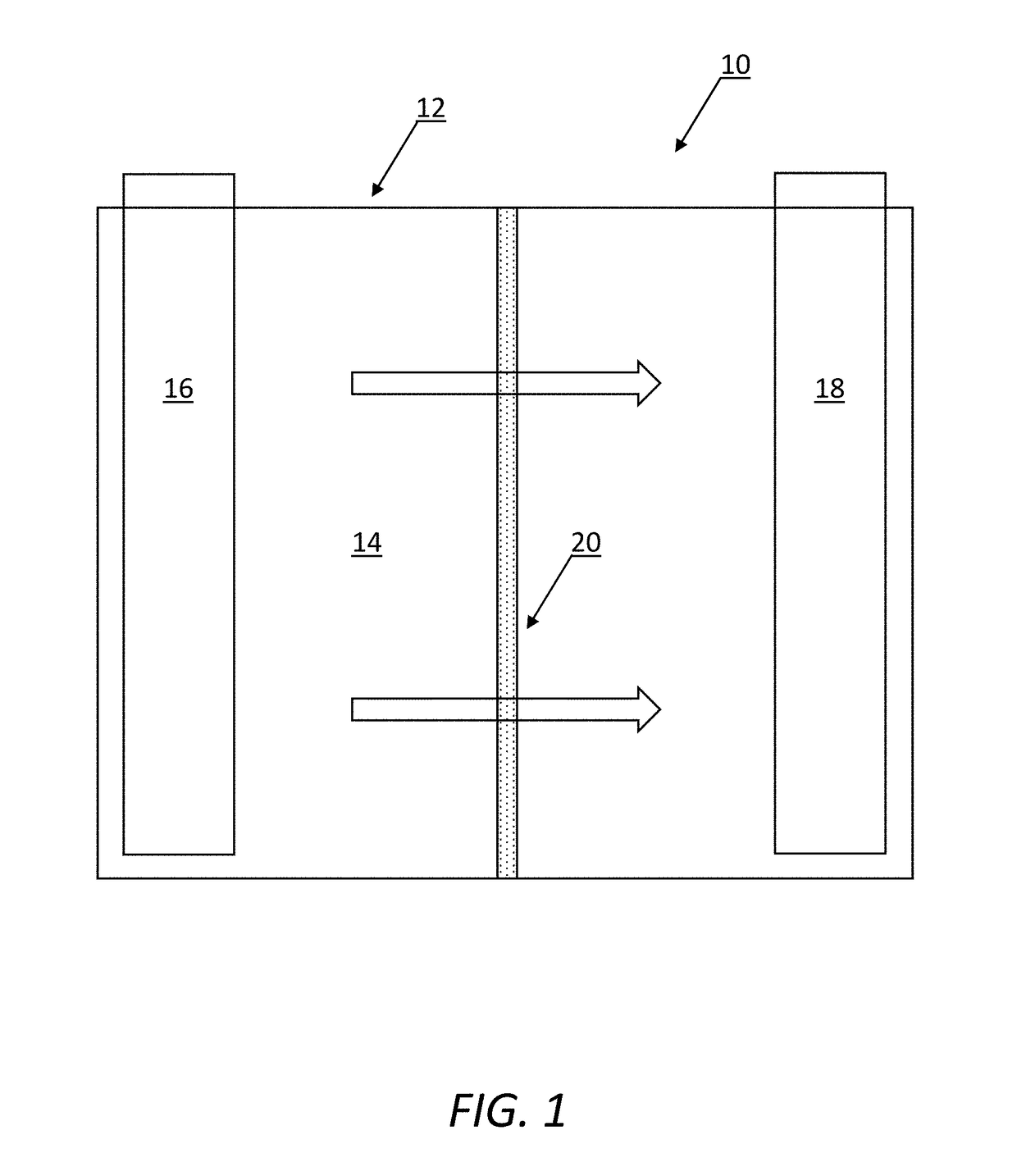Shutdown and non-shutdown separators for electrochemical devices
a separator and electrochemical technology, applied in the field of electrochemical devices, can solve the problems of destroying power generation capability, ineffective batteries, and elevated potential for battery failures and short circuits, and achieves good ionic conductivity, high mechanical strength, and thermal stability.
- Summary
- Abstract
- Description
- Claims
- Application Information
AI Technical Summary
Benefits of technology
Problems solved by technology
Method used
Image
Examples
Embodiment Construction
[0037]FIG. 1 is a schematic diagram illustrating one exemplary embodiment of a conventional electrochemical device (battery) utilizing the shutdown or non-shutdown separator of the present invention. In general, the battery 10 includes a housing 12 containing an electrolyte solution 14 enabling the transport of ions from an anode 16 to a cathode 18 through a separator 20, such as the shutdown or non-shutdown separator of the present invention, in the discharge of electrical current.
[0038]As described herein above, the present invention finds a solution to the problem plaguing the industry for many years to obtain shutdown and non-shutdown separators that have both high mechanical strength (machine and transverse direction), good ionic conductivity, thermal stability, high porosity, and better wettability. The solution is accomplished through a novel process that involves a reliable, robust, reproducible, and cost effective casting technique for a shutdown separator with, for example...
PUM
| Property | Measurement | Unit |
|---|---|---|
| temperature | aaaaa | aaaaa |
| temperature | aaaaa | aaaaa |
| temperature | aaaaa | aaaaa |
Abstract
Description
Claims
Application Information
 Login to View More
Login to View More - R&D
- Intellectual Property
- Life Sciences
- Materials
- Tech Scout
- Unparalleled Data Quality
- Higher Quality Content
- 60% Fewer Hallucinations
Browse by: Latest US Patents, China's latest patents, Technical Efficacy Thesaurus, Application Domain, Technology Topic, Popular Technical Reports.
© 2025 PatSnap. All rights reserved.Legal|Privacy policy|Modern Slavery Act Transparency Statement|Sitemap|About US| Contact US: help@patsnap.com



